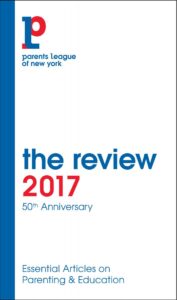6 Questions to Ask When Choosing a Special Education School

You make decisions for your child every day. You choose his food, his playmates, his clothes. You expect to make these choices; in fact, you hardly think about them because they are grounded in your experience and guided by your vision for your family. There is one decision, however, that you may not have expected you would have to make: mainstream or special education.
Is There a Problem?
If your child has a physical impairment or an extreme inability to regulate emotions, his disabilities have probably been evident all along. But as for learning disorders, you may have only glimpsed early manifestations in infancy and toddlerhood, or in a playgroup. It may not have been until your child entered school that these “invisible” disabilities really emerged.
A child with special needs does not wear a flag. It is hard to determine whether difficulties in school can be attributed to personality, a stage of development, or a more profound and systemic set of deficits. Consider these three children:
- Heather has always been shy. She rolled over at the right time, hardly crawled, walked, but she is too uncoordinated to run. In nursery school, she follows the other children, although she never joins their play. She has watched a video about Eskimos multiple times, but she will not discuss it. In the park, she plays alone.
- Aiden is bright and happy—or at least he was until he started school. He crawled and walked early. As a toddler, he charged from room to room cradling his cars and action figures in his arms. He was loving toward his sister when she was born. Now in second grade, he is the class clown and prefers recess to reading. He still favors picture books, so his teacher put him in a pull-out reading group. Oddly enough, he can be very mean to his classmates and sister.
- Jack is eleven-going-on-twelve, has terrible grades and can barely write. When he comes home from school, he closes the door to his room and plays video games—incessantly. He is tired in the morning, procrastinates about homework and wishes his mother would stop organizing him. He once whacked a classmate with his lunchbox, has skipped class and last week he plagiarized.
Each of these children is experiencing difficulty in school and problems at home. Traits and behaviors that were once cute and innocent are now troubling. Do you see your child in Heather, Aiden or Jack? If you do, you may not be sure there is a serious problem, but you may sense something is wrong—and you are worried.
What is Going On?
First, find out the cause of your child’s problems from a credible source. Professional evaluators and therapists can determine if there are one or more problems. They can tell you how severe his problems are and how they interact to make school difficult. They can suggest interventions and estimate how long they need to be in place.
Next, before researching their diagnoses online and talking with friends, you need to believe the professionals. Think back to what prompted your call to the professional or that email from your child’s teacher. Until now, you may have rationalized a lot of what you witnessed. Yet, you are talking with professionals because your child’s behavior is setting him apart from his peers. He is sad or angry and it is affecting the family. Alone with him, you feel as if you are losing your once delightful, joyous and kind child. Nothing you do to try to help him works. You worry about the direction in which he may be headed. When you reflect on conversations with professionals, your observations at home dovetail with their comments. Realizing your child’s problems are not confined to school but are appearing in every area of his life leads to the unavoidable conclusion that he has a disability that is integral to who he is.
Will This Go Away?
Ask yourself three questions: Is my child always making an extra effort to catch up with his peers only to fall behind again? Am I being told by his teachers that he is permanently behind? At school, at home or at both, is he disengaging, withdrawing, so he can be alone?
It is difficult to grapple with the word “disability” because its connotations are so thoroughly negative. Yet terms such as “issue,” “difference,” “difficulty” or “problem” are inadequate, because they describe conditions that are temporary. (Problems get solved. Differences get resolved.) They tempt parents to think that once their child learns to read and write, or just matures, his troubles will fade away.
“Disability,’” on the other hand, describes a neurological deficit that is hard-wired into a child. The idea that this deficit is part and parcel of a child’s constitution and will impede learning and his overall functioning in all areas of life is very scary. Parents wonder, “If Heather only understands part of what everyone is saying, how will she ever hold down a job?” “If Jack can’t write and won’t study, how is he going to go to college?” These are questions parents never expected they would be asking about their child and they reflect all the confusion, surprise and worry parents experience—until they realize it is possible to teach and prepare a child for school and life notwithstanding a disability.
The reason your son quickly falls behind once he seems to catch up is he did not master the skills or develop the competencies that create the strong foundation he needs to move ahead. He probably arrived in school less able than his classmates to infer, connect, combine and generalize. Certain areas of development, such as his language or his ability to plan, organize and manage time, were not correctly and sufficiently developed. His foundations for learning were weak. Extra homework and tutoring are not having a lasting impact because he is not unwinding a history of misunderstandings, bad habits and missed connections. He is not relearning numerous basic skills, making connections properly, and building a new framework for understanding and making judgments.
Your child is caught in a vicious cycle. Learning is a process that entails an attempt to do something, followed by feedback. Too often he tries to do something he thinks he has learned, then receives feedback that tells him he hasn’t. When his teacher says, “Focus!” or “We covered this the other day in class, remember?” the response is unexpected and he finds it hurtful. He thinks he is focusing, but there is so much going on in the classroom—and he does not know what about yesterday was so important.
There is a disconnect between teacher and child. The teacher is doing her best, trying to correct a specific mistake or address a particular behavior. But your child needs something different. He needs instruction that pays much closer attention to the learning of small and incremental skills and the development of compensatory strategies. Since his learning is not automatic, his instruction has to include two additional components—how to learn, and how he himself learns. This takes specific instructional approaches, skill and time. To develop mastery, the child may need repetition. This too takes time.
The failure to develop into a fluent reader is an example of what can happen when an early problem balloons, derails skill acquisition in elementary school, and influences schoolwork well into adolescence. Reading speed and comprehension are highly correlated and one of the components of reading speed that facilitates comprehension is rapid and accurate word recognition. A typically developing child reads 130 words per minute by the end of third grade. He does not study each word closely because he recognizes words automatically; the foundations for rapid and accurate word recognition were laid between kindergarten and second grade. A child who is slow to associate sounds with letters and does not learn to spell will not recognize written words quickly. His reading will remain laborious. When he reads a novel or textbook in middle school, he will expend more mental energy on recognizing words than on comprehension. In secondary school, he will have considerable trouble learning through reading.
Becoming Disengaged
We see that, as learning problems compound, a child can fall permanently behind. With that understanding, let’s revisit our three children:
- Heather’s impaired language system prohibits her from understanding what is going on around her, responding to it appropriately and communicating with others. For her, life is like watching a play in which everyone speaks French. She tries to understand, but can only discern the plot by following the action. She cannot always tell when something is funny or sad; she laughs or cries by taking her cues from others. She comes to a lot of wrong conclusions, her memory is a jumble, and she cannot connect with other children. Fast-talking teachers at school and siblings at dinner overwhelm her. She is happier being alone.
- Aiden has a decoding problem. He comprehends as much as or more than his classmates, but cannot understand why schoolwork is easy for them and hard for him. Clowning around prevents them from seeing his struggle to read. He represses his frustration, jealousy and anger, but sometimes it just feels better to lash out.
- Jack has all but stopped trying to learn and his work ethic is deteriorating fast. Endless gaming, staying up so late he is too tired to function, leaving everything to the last minute, and cheating are all signs he has not learned how to plan, organize and manage his time in order to do the hard work of learning. Jack has figured out that being alone works. He can hide his failures and ignore his schoolwork.
Children with learning disabilities begin to avoid schoolwork and isolate themselves. The price is disengagement from friends and family.
The First Step: Intervention
If your child is facing the difficulties these three children are undergoing, there is no question he needs some form of intervention. What is intervention? It is instruction that is different from what is typically available in a classroom. It can be delivered one-on-one (the child is “pulled-out” of the classroom for a session with a specialist), in a small group or in the design of an entire school.
Intervention targets specific areas for explicit, intensive and supportive instruction. Assuming less about what the child already knows, the teacher, therapist or learning specialist meets him at his level with instruction that is direct, incremental, sequential and multisensory, and allows more time for processing and repetition. She also offers the child emotional support. To maintain the child’s motivation, she provides immediate, positively framed feedback and encouragement. And she scaffolds the child’s work by breaking down a task into easily managed steps or by drawing the child’s attention to a key piece of information. Each time she provides just enough support for the child to perform the work, reducing her guidance and prompting as the child grows more proficient. With time, the child masters the basic skills and strategies along with subject content and experiences real success in the classroom. Building on an experience of success, his self-esteem rises.
The rule of thumb is if your child can manage with outside support and in-school accommodations, and the school will work with your family, then there is no reason to transfer him from a mainstream setting. For example, Aiden might respond to tutoring and with ongoing or intermittent support engage in school, achieve good grades, have a nice group of friends and be a generally happy, genial boy at school and home. Among independent mainstream schools, intervention takes many forms. In-school support programs, including pull-outs and after-school tutoring, supplement regular classroom learning. Some schools are willing to implement accommodations in the classroom.
Whether or not this approach to intervention succeeds will depend on the nature, number and severity of your child’s problems. To assess its effectiveness, you will have to be vigilant about following his progress and flexible enough to consider other solutions when they are warranted. Children who respond positively to intervention at first may need additional intervention at a later stage. If a few hours of targeted, individual instruction and therapies each week are not enough to help your child keep pace with regular classroom instruction, then intervention in the context of a mainstream school is inadequate. Most important, if your child does not seem happier and you are not feeling his relief around your home, it is not a sufficient solution to his problems.
What is a Special Education School?
A special education school is a school-wide format focused on intervention. Like independent mainstream schools, each independent special education school designs its program and facility with a specific population in mind and to reflect a unique pedagogy. These schools are remedial, which means they correct a set of problems and return children to regular classrooms as soon as they are ready. How long a child should be in a special education program depends on the complexity of his learning profile. While it is not possible for all, many of the children enrolled in special education schools will go on to graduate from high school and matriculate at a college or university.
The priorities of special education schools are different from those of mainstream schools. Many are deliberately small, serve relatively homogeneous populations and offer reliably effective, research-based programs to teach cognitive strategies to improve a child’s academic achievement. Depending on their population, they may also offer extensive therapies, arts, athletics, vocational training, or life skills programs. The curriculum and instructional methods always acknowledge the need to work on the non-academic aspects of a child’s development to allow academic learning to proceed.
Even the most academically oriented of special education schools devotes time to children’s social emotional development and the critical role of self-esteem and motivation in their ability to learn in school and function in life. These schools help children understand and accept their own strengths and weaknesses. They guide them as they learn to make friends, often for the first time. They teach them how to advocate for their needs. Many create a community where parents learn to understand their child in the company of like-minded families with whom they and their children become friends—sometimes for life.

How Do I Assess a School?
To identify the right special education school, turn to therapists, learning specialists, educational consultants and educators who have had experience with your child and family. When you visit a school, you may find the admissions team conveys an insightful and comprehensive understanding of your child—and feel as if, finally, you have found school administrators with whom you can speak candidly. You may experience relief because it appears as if you have found a path forward for your child and family.
Even though the weight of worry seems to be lifted, you need to move beyond that really terrific school interview to be sure the program is reliably effective and its values resonate with your own. Observe the students, but pay more attention to the teachers. Schools succeed only when teachers are effective. The teachers should be in control of their classes and have created structured, predictable and safe environments in which children are willing to take risks. Listen to how teachers use their voices. Are they raising and lowering them to guide the students? Are they adjusting the level of their questions to suit each child? Look for eye contact between the teacher and students. Is the room cluttered or are the visual aids easily seen? Consider whether teachers are in charge of their content. Check out the physical layout. If your child needs handicapped access or an assistive device, will it be provided for in a convenient way? Ask what kind of child the school serves, why, and to what end? The school’s basic beliefs about how to teach its students and what the children can achieve, along with its values, will be embedded in the answer.
Is This the Right Choice?
Low self-esteem, loneliness, sadness, frustration, anger and withdrawal are all the ways disabilities play out in children’s lives. You may feel it in your family’s dynamic, and worry about how you are going to parent your child and keep him in the fold. If a deficit’s disruption is hurting your child in school, on the playground and at home, if you sense your child is becoming unfamiliar and unreachable, it is time to look for a special education school. With the right intervention in a special education school that meets his needs, he can learn to cope with and compensate for his differences.
To accept your choice, focus on what you value most. Your child may be different from other children but, just as they do, he needs to learn right from wrong, manners, good judgment and a work ethic, and be prepared to join and contribute to a community. Like most parents, you probably value education highly. It may be the means by which you created opportunity in your own life. Education will do the same for your child. It just has to be done differently and in a reliably effective way.
In the final analysis, if all the warning signs indicate your child would be better served in a special education school, it is possible to make that choice with confidence. Surrounded by the right values and taught in the necessary ways, your child will learn how to produce academic work reflective of his intellect, develop the stamina to work hard, recognize and accept his needs, become a strong advocate for himself, know what it means to be a full participant in a community, and start to feel proud of himself again. Intervention in the form of special education can transform not only your child’s life but your family’s as well.
Resource
The Parents League has special education school advisors and holds workshops for parents that follow a support group format.
Carolyn Salzman is Head of School at The Gateway Schools, a school for children ages 5 through 14 in Manhattan.
This article first appeared in the 2015 Edition of Parents League Review. ©2017 Parents League of New York. Get the current edition of the Parents League Review free here with a family membership. Or purchase it directly here.












